Trumpeter | 2224: 1/32 SU-27 Flanker B
Reviewed by Mark Proulx
Trumpeter continues with their aggressive release schedule of 1/32nd scale models by offering the long awaited SU-27 B Flanker. In this review we will have an in depth examination of the model out of the box.
The first thing modelers will note is the size of the box with its impressive color artwork. Upon opening the lid the sheer size of the model is confirmed. It is huge and fills the entire box! The model measures out to be 27" long with a span of 18". The parts are very well packaged. The upper and lower fuselage halves each have their own individual box and they are securely fitted to a cardboard support. A long box contains the nose radome and intakes. Each is individually wrapped with cellophane and styrofoam to prevent damage. An additional box contains items such as exhaust nozzles, vinyl tires, photo etch fret, white metal landing gear and clear canopy parts. Other than the white metal parts, all items are again individually wrapped with the clear parts receiving extra care and attention with a styrofoam surround. The rest of the box contains all the trees for the model wrapped in clear plastic.
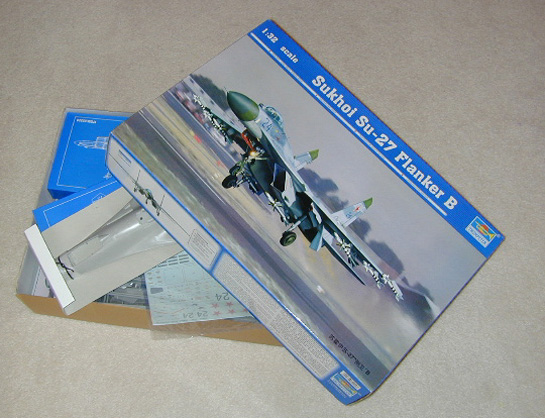

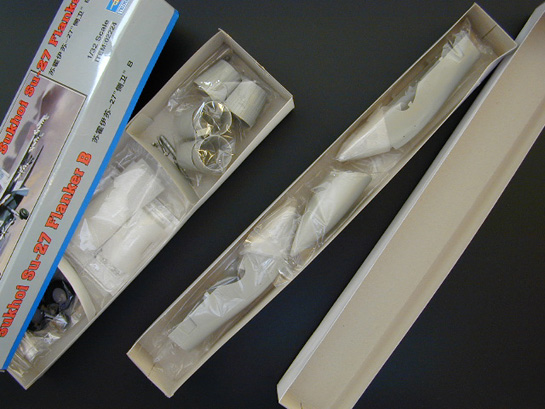
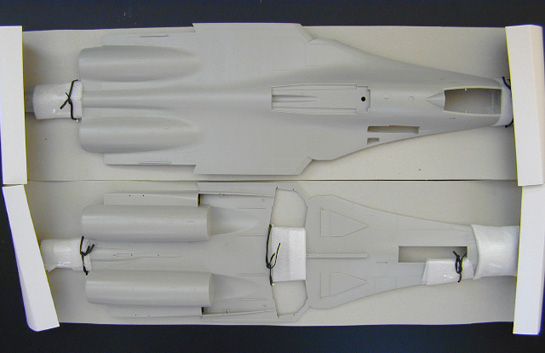
My first impression of the model is that it is extremely well engineered. The surface detail is nicely scribed, though I have not compared the model to plans to check accuracy for this review. From my references (SU-27 Flanker Concord Publications), Trumpeter appears to have accurately captured the shape and outline of the SU-27.
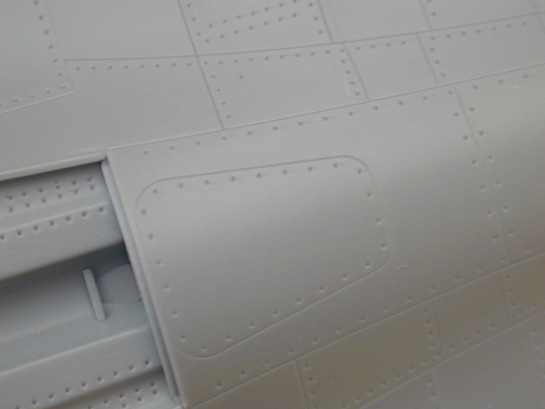
There are a number of interesting features to the model. The white metal landing gear is complete with functioning oleos. Plastic landing gear is also supplied for those not wishing to work with white metal. The brake chute door may be positioned opened or closed. Panels can be removed to view the Gryazev/Shipunov GSh-301 30mm cannon. Common to other Trumpeter kits, this model uses photo etch and metal rods to secure the movable control surfaces to the wings and vertical tail. The dorsal airbrake and canopy are also moveable.
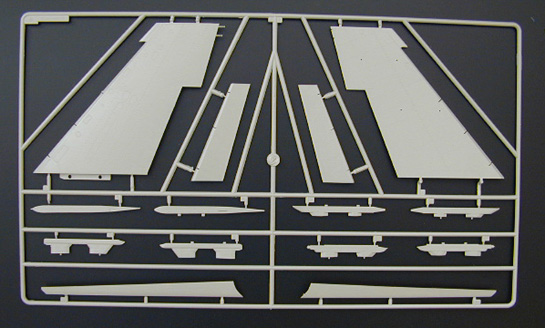

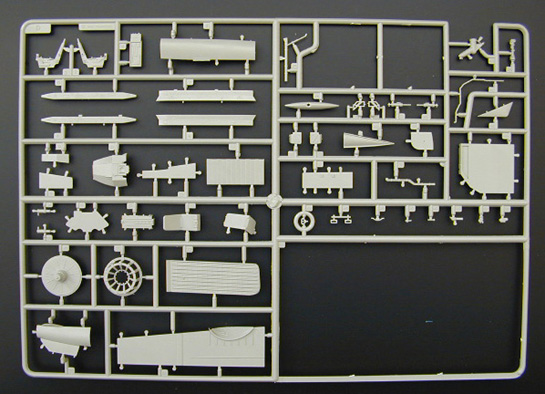
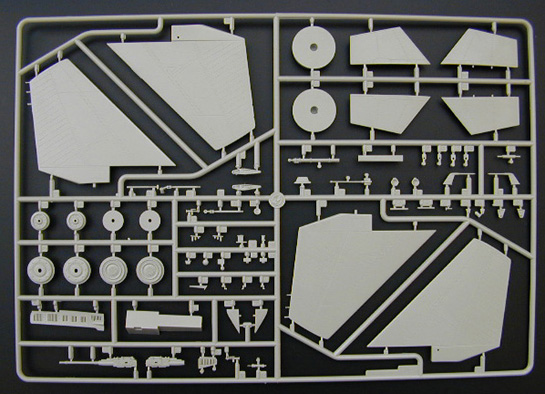
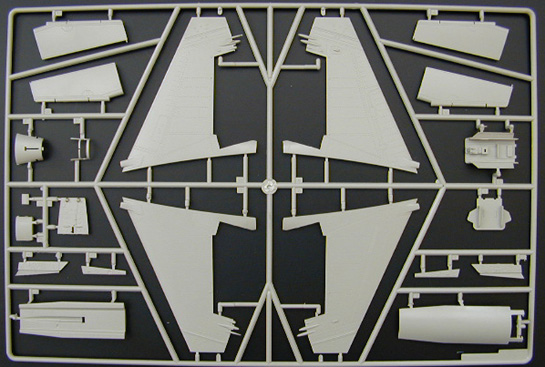
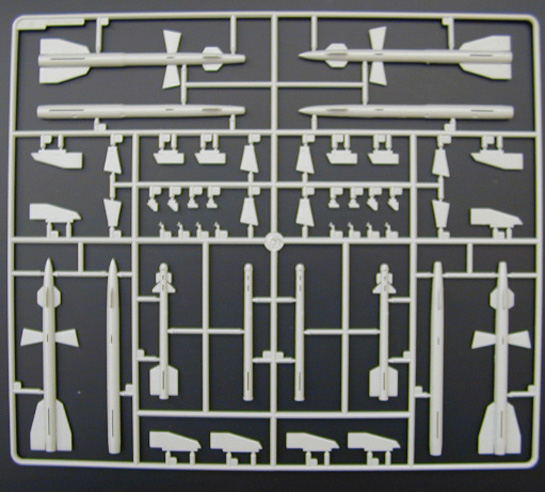
The 38 step instructions cover 24 pages. They include complete exploded views of all 350 parts mapped out in their perspective trees. Each step seems well laid out and I am sure they will be easy to understand. Painting and marking instructions are included on a large separate foldout. The decal option is for a single Flanker. It depicts an aircraft from the 582nd Fighter Regiment 4th Air Army (Soviet Northern Group of Forces) Frontal Aviation Chojna, Poland circa 1992. Colors are matched to FS 595b color chips.
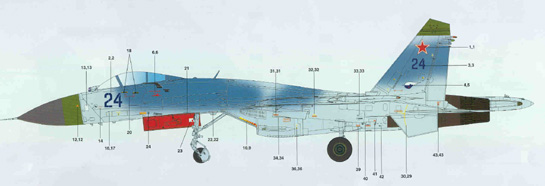
The fuselage halves are removed from their separate container. The parts are safely secured with wire and styrofoam. The two sections reveal excellent scribed surface detail. Some minor molding flaws are visible around the fuselage sides by the engines. I am sure this results from the complicated molds that were used to create the model. These mold lines can be easily cleaned up with sand paper. I really like with the design of the two fuselage sections incorporating internal structural supports. This should eliminate the possibility of squeezing the halves together once completed and creating visible seam lines. To further add support, the two halves are screwed together with the screw heads being hidden under plastic parts.
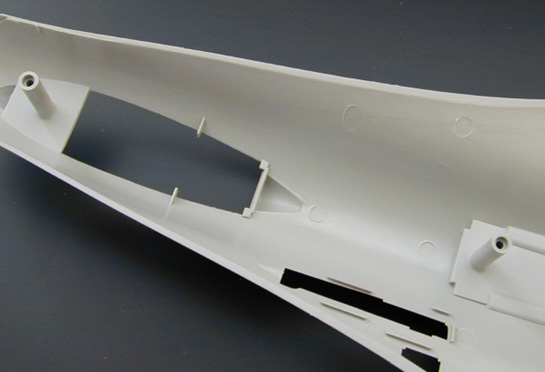
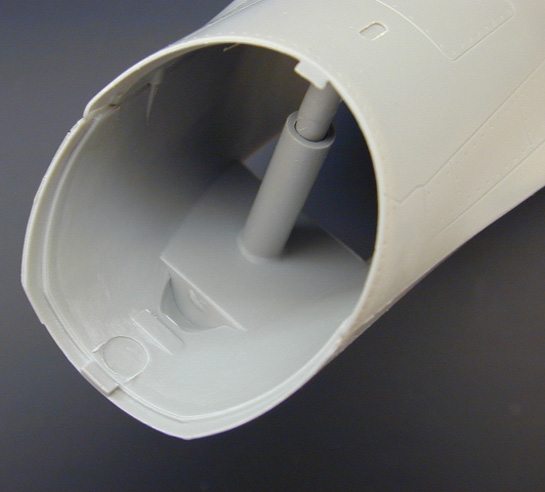
A number of sub-assemblies are glued together and attached to the fuselage halves before they are joined. This includes items such as the wings, cannon, wheel wells and cockpit. The forward wheel well is made up of five parts and is secured with screws ensuring that it remains in place. Main wheel wells include very nice surface details. Modelers will be pleased to note that the cockpit is also very nicely cast with plenty of detail evident. It is made up of approximately two dozen pieces, which includes an accurate K-36D ejection seat with a PE harness. The instrument panel is clear with dials supplied on a separate plastic film.
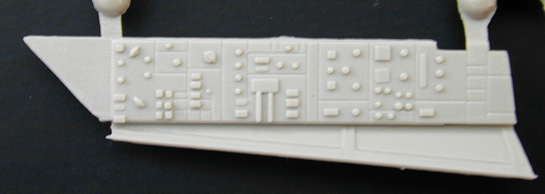

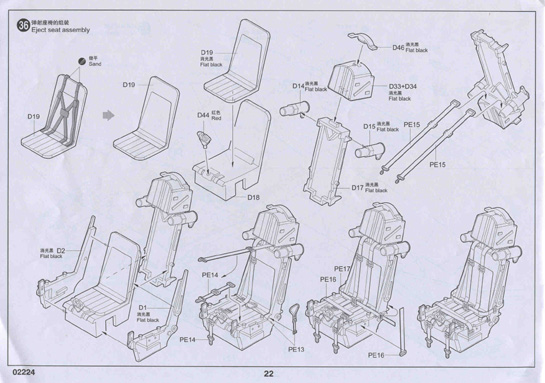
I am confident that an exacting rendition of the SU-27 cockpit will result. After the wings are assembled (which includes Trumpeters metal rods and PE mechanisms), they are attached to prominent pins on the fuselage.
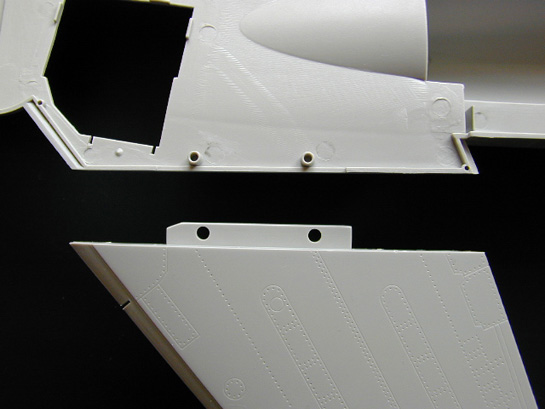
This should provide a good fit and ensure proper dihedral. The cannon consists of seven pieces. Unfortunately the cover and gun recess have very prominent ejection pin markings that need to be removed.
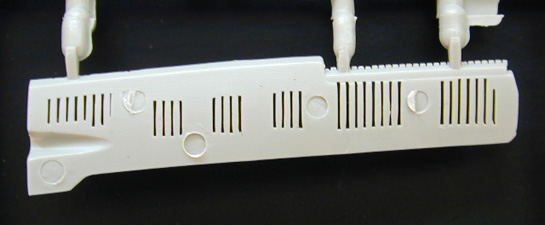
The next major subassemblies to finish are the extensive weapons stores. The SU-27 carries ten external hardpoints. Trumpeter supplies air-to-air weapons for each location. This includes R-73 "Archer" and R-27 "Alamo" missiles. Each is nicely detailed with clear parts used for the seeker head of the R-73.
The undersides of the SU-27 need to be completed. This includes adding the detailed intakes, weapons with pylons, stabilizing fins and landing gear. There are two choices of landing gear. The modeler can opt for plastic or white metal. The white metal items do have some visible ejection pin markings, yet they can stand up to the weight of this very heavy kit. The plastic items also seem to be sturdy, but they may be more susceptible to breakage. Whatever choice is made, you are left with very realistic and highly detailed landing gear. The nose gear alone requiring in excess of twenty pieces to complete! Trumpeter continues to use springs in the gear struts to represent oleo bounce. I have not heard of any problems with this concept to date. The landing gear is complete with a set of vinyl tires. They match the rest of the landing gear in detail with very subtle tread pattern.
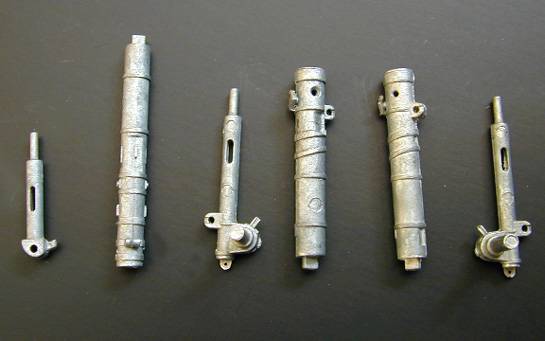

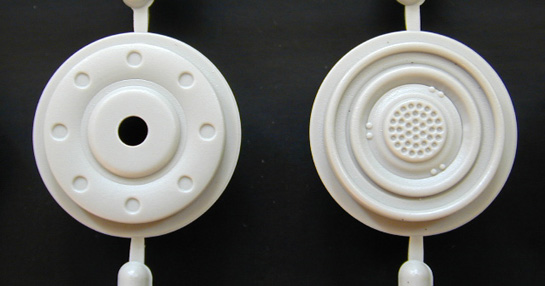
Two separate intakes are supplied. As can be seen from the attached photo a prominent seam needs to be removed on the outer surface.
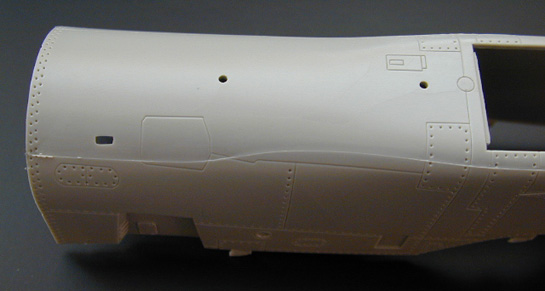
Trumpeter does not include intake plugs with the kit, however the intake ramps are shown in the closed position. This eliminates additional detailing work in the intakes. The undersides are completed with the addition of stabilizing fins, gear doors and various antennas.
For the exhaust, Trumpeter has supplied among the best-engineered parts that I have seen for a 1/32nd scale jet. It consists of five parts for each engine. What makes this arrangement unique is that the parts are cast as a one-piece affair, not in two halves that other manufacturers supply. This eliminates the requirement to clean up prominent seam lines in the exhausts.
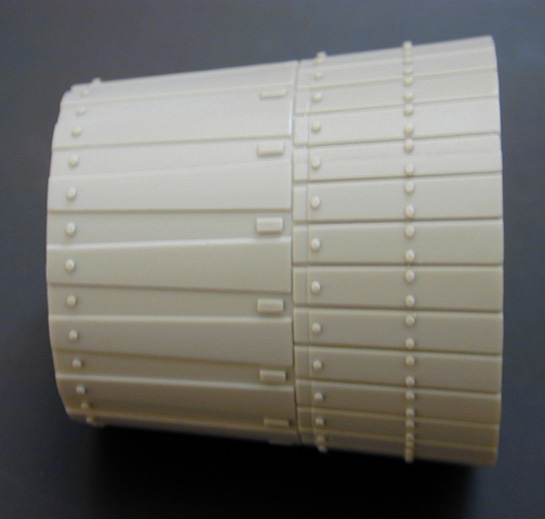
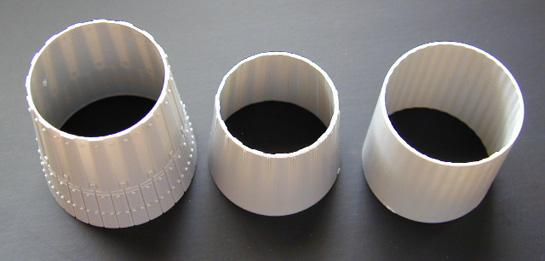
The horizontal tail surfaces are molded as upper and lower parts. They use a small alignment pin to attach them into place, which could be very fragile. The vertical surfaces come with Trumpeters rod and PE hinge attachments for the rudders, which allows them to be moved after completion of the model. A sturdy tab and slot arrangement should provide for proper alignment.
The major disappoint to the model are the canopy clear parts. Common to many 1/32nd jet models, a prominent seam is visible down the center of the movable canopy. This can be removed with sanding and polishing. However, the seam down the center of the canopy causes a major step or misalignment on the frame. I suggest sanding the center lateral frame off when removing the seam and then paint it on.
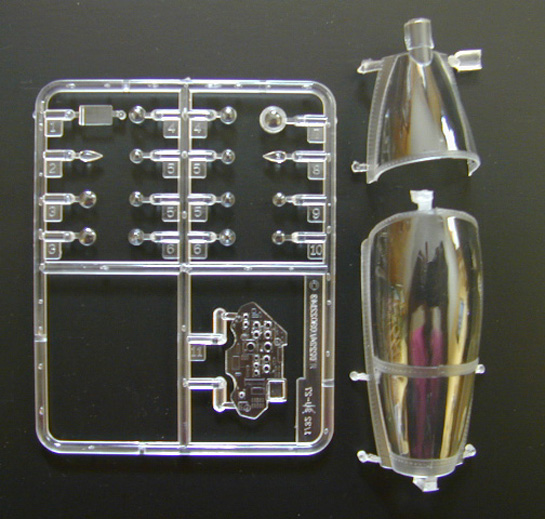
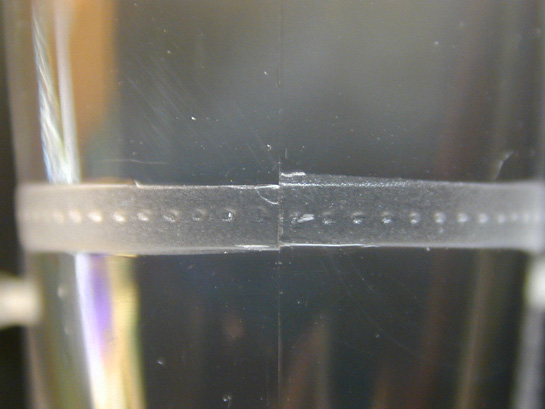
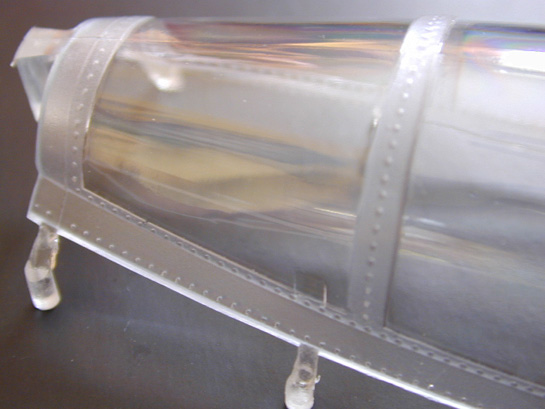
The kit decals are printed by Cartograph. They appear very thin with a minimal amount of visible carrier film. Complete stencils are supplied. The stencils are extensive and include all the pertinent aircraft and weapons pylons placards. Modelers should note that the large black circular markings are dummy indicators for the missiles.
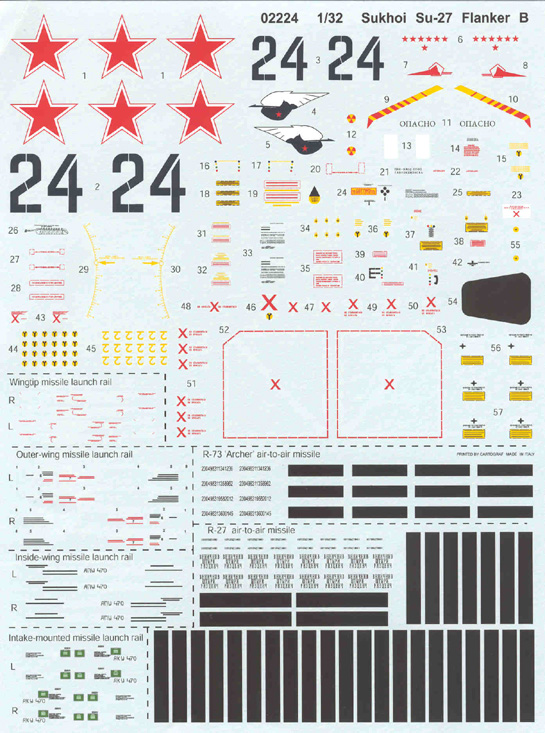
The new SU-27 from Trumpeter is a welcome addition to their expanding 1/32nd scale line. The vacant area visible on some of the trees indicates other variants of the aircraft are in the works. In my opinion Trumpeter's Russian aircraft kits are among their best, most accurate models. Their SU-27 adds to that assumption. I am sure that anyone with an interest in Russian aviation or the SU-27 Flanker would be extremely pleased with the purchase of this model.
Review sample compliments of Stevens International.
© Mark Proulx 2004
This review was published on Saturday, July 02 2011; Last modified on Wednesday, May 18 2016
